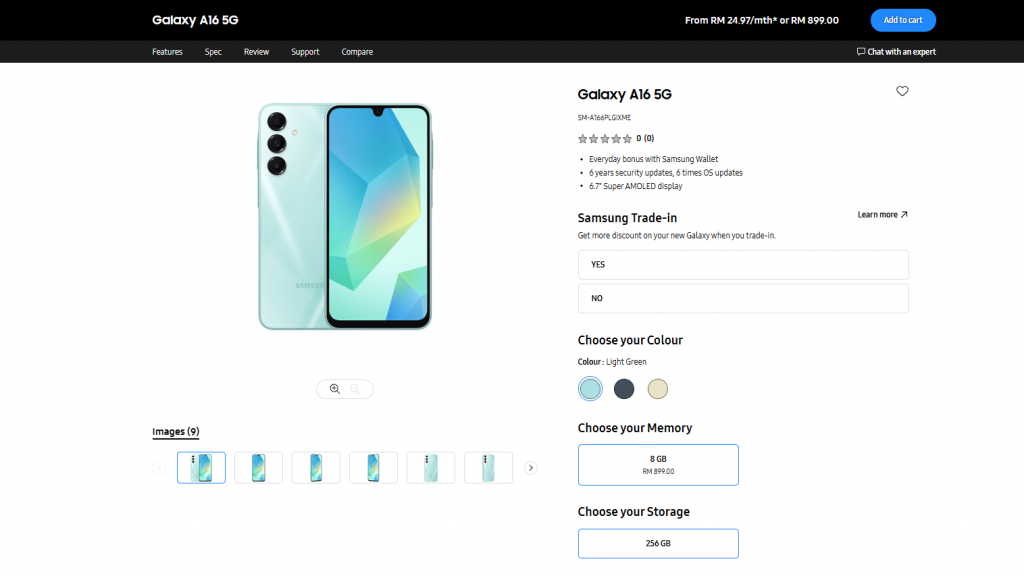Wireless headphones dominate the smartphone segment. However, wired headphones still have a lot to say. Perhaps you have wondered about the differences between wired vs wireless headphones, beyond the obvious ones such as connectivity. Throughout this article, you will find the pros and cons of each format.
There is no definitive answer as to which headphones are better between wired and wireless. If we talk purely about audio quality at equal prices, wired headphones will win most of the time. However, there are several other factors at play. For example, a professional gamer is not looking for the same thing as a runner or an audiophile. Therefore, the best approach is to look for what type of headphones are ideal for you.
Everything you need to know about wireless headphones
For a long time, wired headphones dominated the market. Developments like Apple removing the audio jack from its iPhones greatly accelerated the evolution of the TWS (True Wireless Stereo) segment, although it made things complicated at first. TWS earphones are those that do not have any kind of wired connection between them. However, there are also wireless earphones that link the two “buds” by cable, such as the CMF Neckband Pro. Many over-ear and on-ear headphones also do the same thing. Both form factors qualify as wireless because they connect to other devices via Bluetooth.
Pros of wireless headphones
That said, wireless headphones have their pros and cons. Starting with the pros, this format allows for a wider range of movement compared to wired earphones. That means you can move freely without worrying about disconnecting them (up to a certain distance), or even accidentally causing damage to your device. Many people have experienced situations where phones fall to the ground after moving more than they should while wearing wired earphones.
Wireless earphones also usually offer IP ratings to protect them from liquids and dust, mainly in TWS and “Neckband” formats. This is because brands design them so that you can use them while running or doing any kind of exercise. So, sweat or high pollution do not represent a danger to their integrity.
Modern smartphones are designed with the use of wireless earphones in mind. So, compatibility with almost all types of devices without the need for special adapters is another point in favor of wireless earphones. Plus, once you set up the initial connection, the next ones are usually automatic as soon as you take them out of the charging case or enable Bluetooth on your phone.
Most wireless headphones manufacturers include ANC (Active Noise Cancellation) support. ANC is a technology that significantly reduces background noise by generating sound waves that cancel out the noise around you. It’s especially useful for situations like mitigating the sound of cars or people murmuring while listening to music. You could even use it during airplane trips if you want to sleep better. It’s noteworthy that there are also wired headphones with ANC, but nowadays the feature is closely related to wireless headphones. Furthermore, while ANC was initially exclusive to expensive wireless earbuds, it’s now available in low-end models as well.
Cons of wireless headphones
Wireless headphones also have some disadvantages compared to wired ones. They use audio protocols and codecs that involve compression. So, depending on the codecs supported by your headphones and audio source, the quality will be better or worse. Anyway, you’ll only notice this in high-quality audio sources. This includes locally stored music in lossless formats (like FLAC) or music streaming platforms that support high bitrates (like Tidal and QOBUZ).
Most wireless headphones support both SBC and AAC (only SBC on some very cheap models). AAC was designed as a high-quality format, so it sounds good enough for most users. However, its transmission bitrate is a bottleneck that prevents you from getting the best experience with lossless audio files or platforms that support high-quality audio streaming. For example, Tidal can stream music at 9,216 kbps (up to 24-bit 192kHz), but Apple’s AirPods support a maximum of 320 kbps.

To solve that problem, higher-quality wireless audio codecs emerged. Qualcomm has the aptX series, and Sony has LDAC (other manufacturers can license it too). There’s also LHDC, supported by the new OnePlus Buds Pro 3, as an open-source alternative to LDAC. Some manufacturers, like Samsung, even have their own high-quality proprietary codecs for their earbuds (like the Galaxy Buds 3 series) that only work on Galaxy devices. Anyway, thanks to their analog output, the codec problem doesn’t exist on wired earphones.
Another thing to keep in mind is potential connectivity interference. Whether it’s due to physical obstacles or other wireless signals, you might experience micro-interruptions under certain conditions. There are also codecs that are more prone to interference than others. The latest Bluetooth versions help to avoid these situations.
Wireless earphones’ freedom of movement implies the presence of batteries. Therefore, one potential drawback is the need to charge them after a certain time. Fortunately, the battery life of TWS earbuds has evolved positively in recent years. Meanwhile, headphones in over-ear and on-ear formats boast batteries that can last several days without charging.
Everything you need to know about wired headphones
Now, we will highlight the main pros and cons of classic wired headphones. You probably already know a lot about them as they stem from the drawbacks of wireless models. One advantage is the audio quality, which will always be completely faithful to the original source because there is no compression. This saves you the hassle of searching for information about which codecs your device or your wireless headphones support. In any case, if the original source plays highly compressed audio, wired headphones will not sound better than wireless ones.
Pros of wired headphones
Wired headphones are usually cheaper than wireless ones. This applies to similar ranges, as wired models will usually offer better sound quality for the same price. They are also more repairable, as their components are usually easier to find. Many also value the ability to play music without battery life limitations. Zero latency is another point to consider, especially for gamers.
Wired headphones also allow you to boost the quality of the audio output using DACs. There are high-end DACs that can bring out the full potential of the right headphones. Even with cheaper DACs and headphones, you can noticeably improve the audio quality. Anyway, the DAC’s capabilities must match those of the headphones, since connecting a $10 pair to a $500 DAC will do no good. You can get DACs in virtually any price range, from under $10 to over $1000.
Cons of the wired format
Overall, DACs are great, but not everything about them is positive, especially when you have to resort to them to connect wired headphones to phones without an audio jack. Social platforms are full of users complaining about the incompatibility of various DACs with their devices. So, you won’t really know if your headphones will work properly on your phone until you try them out. Plus, even with DACs supported by your phone, there are wired headphones with high impedance or low sensitivity that require more powerful hardware.
Another disadvantage of the format is that potential damage to the cable can affect the audio quality or completely render the headphones unusable. You must also unplug them whenever you want to move away from the sound source, which can be cumbersome and a potential cause of damage to the connector or port.
A quick summary: Wired vs wireless headphones
Knowing all the pros and cons of wired vs wireless headphones should help you figure out which form factor is ideal for you. If you want to make a quick purchasing decision and then delve deeper into the topic, below is a brief summary.
If you’re looking for headphones for gaming or e-sports competitions, wired headphones are your best bet. The lack of audio latency can be a key factor during online matches. If you are an audiophile, you can go for wired headphones, but also for wireless headphones that support high-quality codecs such as aptX, LDAC, or LHDC. Make sure that the sound source can also stream lossless audio.
If you’re looking for gym headphones, wireless headphones are the perfect choice. TWS and Neckband form factors are usually designed especially for such situations. If you want headphones that can fit most situations in your daily life, wireless headphones can be the answer. TWS models are not only discreet and comfortable, but they can also reduce the noise around you. Lastly, office workers can turn to both wired and wireless headphones, although the latter are more convenient if their work involves getting up from their seats a lot.




